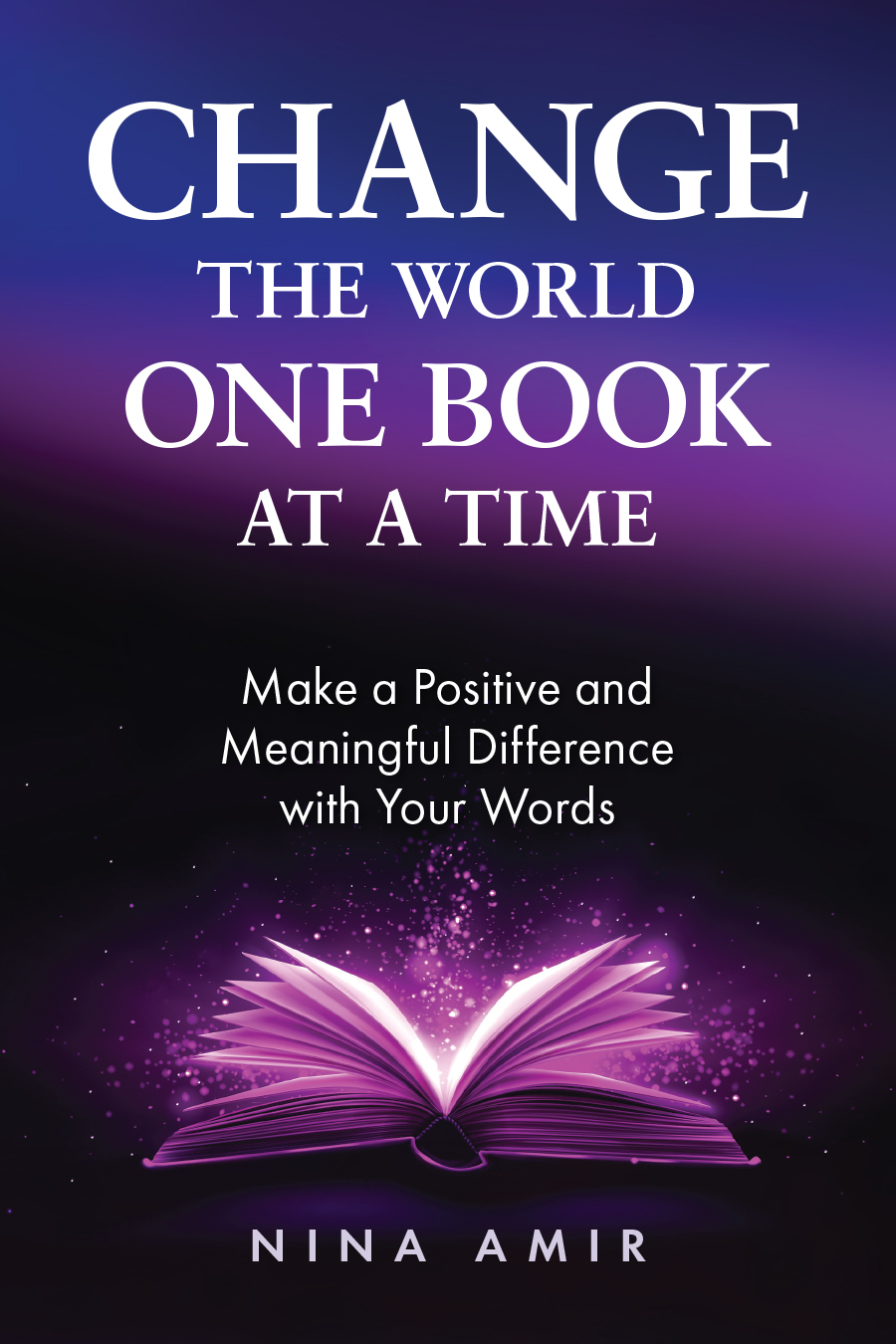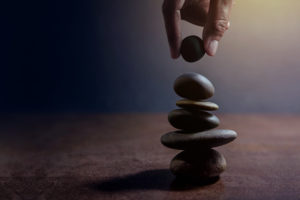I’m a big believer in visioning, or visualizing what we want to create in the future. I guess you’d call this foresight. I’ve noticed however, that my foresight tends to be perfect. In fact, you could say that when I see the future, I have better-than-20-20 vision.
Yet, I’m well aware of the common adage the hindsight is 20-20. I understand this to mean that we don’t always see clearly in the moment, in the now. Seeing in this sense encompasses more than just seeing what is right in front of us but also those things that are hidden or harder to see, such as why things are in our lives or experiences. Sometimes we only “see” this when we look backward at the past with a new perspective afforded from time and space.
All of this tells me that when I’m visioning the future, and then the future becomes the present, my better-than-20-20 vision becomes flawed. I don’t see perfectly. Sometimes I don’t see at all. I might even create that perfect future I envisioned and not see it at all. I might not realize I manifested it in the here and now.
I began thinking about this idea of hindsight and foresight when I recently was asked to speak on the topic of vision at a local new thought church. I needed more than this one little bit of personal wisdom to fill out my 30 minute talk, and the congregation tends to like the fact that I typically bring them some Jewish teachings when I speak there. I didn’t know much about the Jewish view on vision, however, so I put out a query to my Jewish Renewal list serve for help. I received many suggestions, all of which were thought provoking. There were too many to include in my talk or in this blog, but a few provided me with the insights I needed. I’d like to share a few here as well.
My friend and teacher Rabbi Goldie Milgram first reminded me that the morning blessings refer to vision. Indeed, each morning observant Jews say the words, “Blessed are you God who gives sight to the blind.” Reb Goldie told me that she believed that this blessing doesn’t simply refer to blind people who are given sight; she said it refers to our capacity “through God-connection to become increasingly less blind to what’s around us.” So, the more connected we are to God, the more we see, the more vision we have. Or maybe we simply become more aware and more conscious, and, therefore, we see more clearly. This provides a compelling reason to pursue a spiritual practice of some sort each day. I personally like to combine my spiritual practice with visioning. I’m not sure if that can improve my foresight, which is already excellent, but I’m sure it improves my ability to see my present. I definitely see my now with added clarity when I do this.
Reb Goldie also suggested I look at a reading fro the prophet Isaiah. This particular reading is called Chazon after the first Hebrew word (chazon) in the portion, which mean’s “vision.” The Shabbat (Sabbath) on which this portion is read is called the Sabbath of Vision (Shabbat Chazon), and it precedes the holiday of Tish B’Av, which commemorates the destruction of both the temples in Jerusalem. On this Sabbath, every year Jews read of Isaiah’s vision of the destruction of Jerusalem and of the rebirth of Jerusalem and the building of the third temple – a vision of a joyous time that has not yet arrived.
Some very great commentators have shared their thoughts on why just before the holiday that commemorates such a sad event in Jewish history we read a prediction of this tragedy but a vision of a happier time. For example, Rashi taught that even as Jews begin this period of grief they should also envision sadness turning to happiness, thus remembering that this is the course life tends to take. Rabbi Levi Yitzchak of Berditchev taught that our vision of the future must become internalized and arouse a longing, for this changes us and makes it possible for us to bring that vision into physical reality. In this process, our souls see the vision as already existing; thus, we long for something that is distant and that inspires us while at the same time feeling at peace with something that exists within us as reality.
Rabbi Levi could be one of the teachers on the popular DVD The Secret (or quoted in the book by the same name) or a proponent for my own book Abracadabra! The Kabbalah of Conscious Creation! He’s talking about the power of seeing what we want as already manifest. And he’s talking about being happy and at peace with the vision of what we want even though we haven’t yet seen it come into our physical reality.
In addition, my friend Rabbi Fred Guttman was kind enough to share one of his High Holy Day sermons with me that spoke to the fact that without a vision of the future we cannot manifest that very same future. He quoted from Proverbs, chapter 29, which says, “Where there is no vision, the people show no restraint.” Says Rabbi Fred, “The text here is teaching us that without vision, the people lack direction and fumble around.” Isn’t it true that if we don’t visualize our future – if we don’t see it clearly – we don’t know where we are going? That foresight gives us a roadmap, a blueprint that we can follow.
Additionally, Rabbi Fred told a wonderful story about 10 Jews crossing a river prior to the onset of the Sabbath. When they get to the other side, however, the leader counts them all to see if they have all made it across. To his dismay, he finds there are only nine. Someone has drowned in the river leaving them without a minyan. He counts several times with the same result. As the group begins to wail for their drowned friend, a peasant comes along. He count the men, and finds that there are, indeed, still 10. The leader had not counted himself. Rabbi Fred ended the story by saying, “Very quickly, these wise men understood that it is one thing to count upon others, but it is something else entirely to count upon oneself.”
Rabbi Fred went on to stress a similar point in his sermon as did I that Sunday morning in church. I pointed out that if we don’t put ourselves in our own vision, we will never see ourselves in that future we desire to create. The future might come to pass, but we won’t be in it. Plus, to make that vision into a reality, we must count upon ourselves to manifest it; we must see ourselves as part of what is necessary to bring it into physical reality.
Last, but definitely not least, I shared with the small congregation a story from one of my favorite Jewish authors, Rabbi Mitch Chefitz. The story, called “Just a Miracle,” comes from his book of short stories, The Curse of Blessings (previously published in his novel The Seventh Telling: The Kabbalah of Moshe Katan) and describes a townspeople’s reaction of young Elijah’s miracles. No matter what he does, the townspeople say it was “just” this or “just” that. The young girl who is the recipient of all these miracles learns a lesson from this, a lesson about how our language and our thinking affect our vision. Here’s what Mitch writes about the lesson she learns and goes on to teach others:
“The word just puts blinders on you,” she taught. “so even though a miracle might be right there in front of you, you won’t be able to see it. You would see just this, or just that, but never look into the depth of anything. Your eyes would never open in wonder.
“That you open your eyes at all is a miracle. The word just can’t keep your eyes from seeing, but the word just can keep you from seeing the miracle of sight.”
So, go out and see. Feel blessed that you have vision. Connect with God so that your vision increases. Have foresight. Use your better-than-20-20 vision to visualize that perfect future you desire. Internalize that vision so that it changes you and changes your future. See yourse
lf
in that future. And when that future becomes your present, and that present is miraculous, don’t discount it as just another day, another moment, another whatever. See it. Really see it. Have 20-20 vision, or better-than-20-20 vision, now.



So you see the future better than the past? Please enlighten us with your future predictions
No, I don’t focus on the past. And I envision the future I desire.